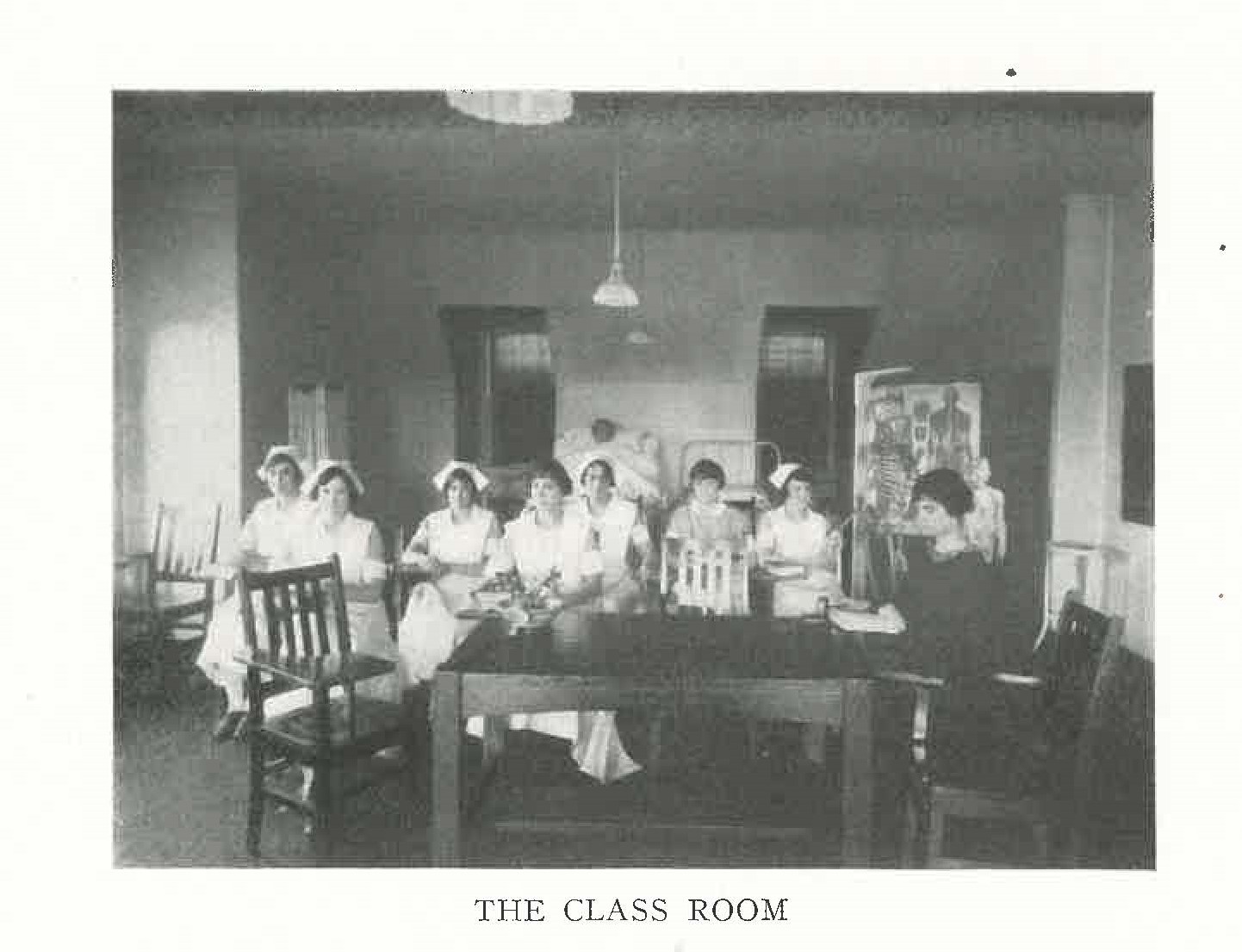
Alexandria Hospital: Patient Care
Patient Care
Nursing School
Students in the Alexandria Hospital School of Nursing played an important role in patient care, while the school provided a pathway for women to further their education at a time when opportunities were limited.
The School of Nursing opened in 1894. Marjorie Adamson started a small training school at the hospital consisting of two pupils, which marked the fourth school of nursing to be established in Virginia. Adamson was a graduate of the Glasgow Royal Infirmary in Scotland and both a physician and a nurse. She proposed to the Board of Lady Managers that the school offer general nurses training based on the curriculum used at leading training schools in the south. Students were single white women between the ages of 19 and 35. The school grew, particularly under the 21-year leadership of Fannie Carter. She served as the Superintendent of Nursing for the hospital and Director of the School beginning in 1916. Carter raised admission requirements and hired the first full-time instructor.
Facing financial hardship due to the Great Depression, the School of Nursing closed its doors in 1933. Ten years later it reopened to help alleviate the nursing shortage caused by World War II. At that time, the hospital acquired the former St. Mary’s school property at the southeast corner of Prince and Columbus streets to accommodate the school. They renovated the building to provide modern classrooms and student housing and named it Carter Hall in honor of Fannie Carter.

Courtesy of the Board of Lady Managers

Yearbook images courtesy of Rebecca Jackson
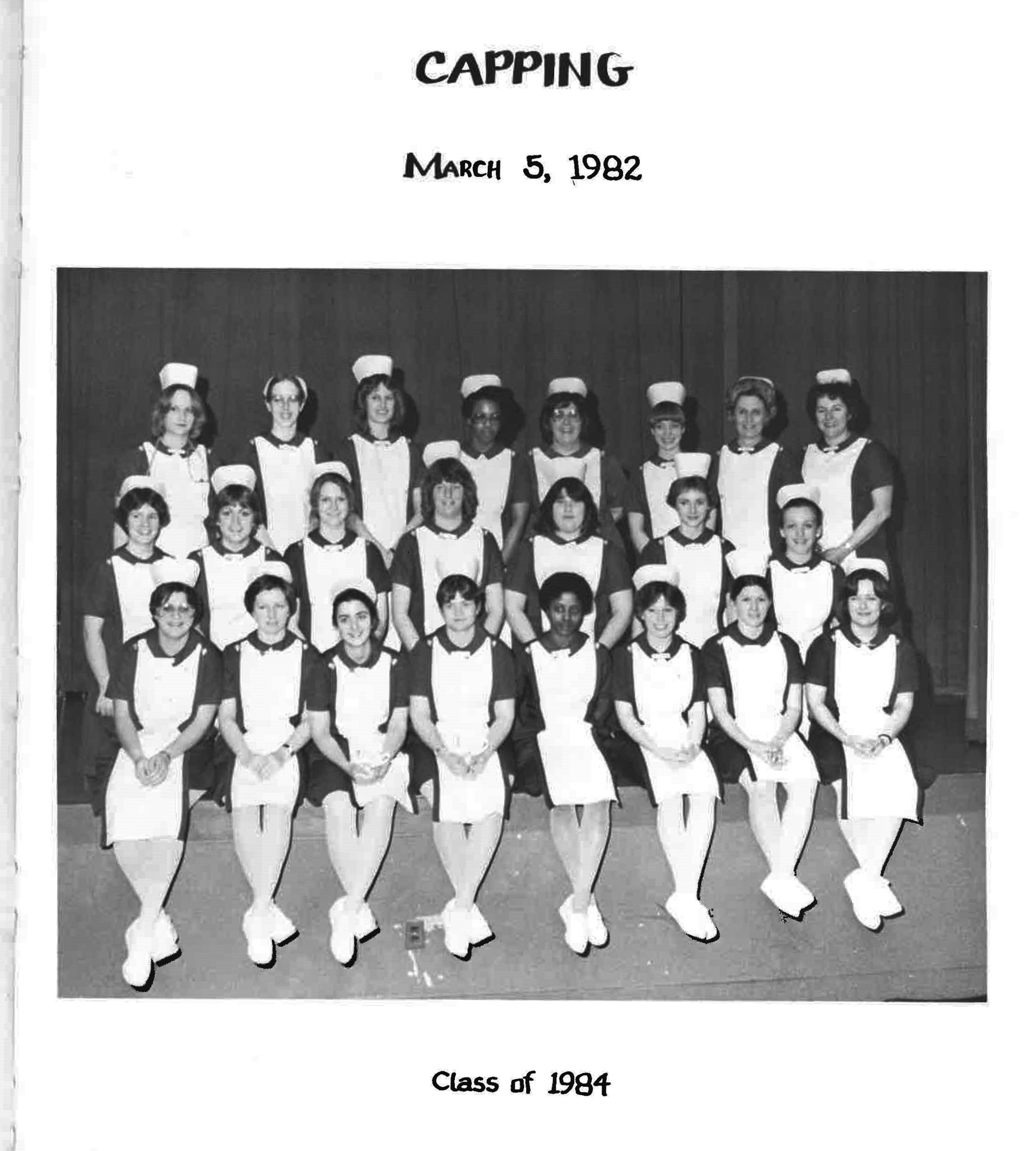
Yearbook images courtesy of Rebecca Jackson
Upon reopening, the school provided training for the U.S. Cadet Nurse Corps program until 1945. In the following decades, the school expanded. In 1956, the Medical Nursing Library was established. In 1958, the school was accredited by the National League for Nursing, married students were allowed to enroll, and the school became the first in Virginia to admit male nursing students. The school enrolled two African American women in 1968.
In 1974, the School of Nursing moved to the Nursing Health Education Center -- a commuter facility at the Seminary Road hospital. However, by 1981 the Board of Directors of the Hospital formed a committee to conduct a full review of the School of Nursing. In March 1984, upon completing its review, the Board of Directors made the decision to phase out the School of Nursing. The number of applicants had been declining as students favored four-year baccalaureate programs over the school’s three-year clinical diploma program. The final students were admitted to the program in fall of 1984 and graduated in June 1987. Upon its closing, a total of 940 students had graduated from the Alexandria Hospital School of Nursing.

Courtesy of the Board of Lady Managers
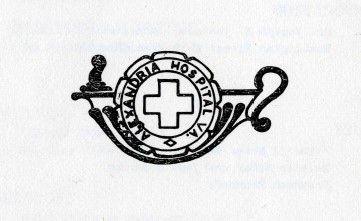
The Nightingale Lamp is a symbol of the nursing profession. In Turkey during the Crimean War, nurse Florence Nightingale became known as “the Lady with the Lamp” because of the light she carried at night when walking among beds checking on wounded soldiers.
U.S. Cadet Nurse Corps
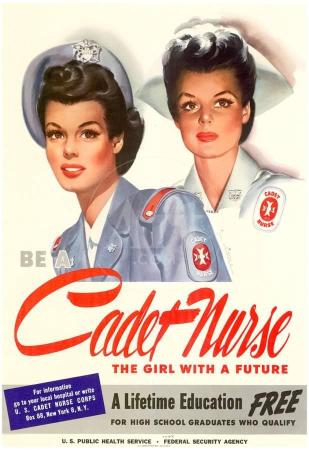
When the Alexandria Hospital School of Nursing reopened, it was approved for participation in the U.S. Cadet Nurse Corps (USCNC) training program. The first class was 27 students beginning on October 15, 1943. The USCNC, organized under the United States Public Health Service, was the first integrated uniformed U.S. Service Corps in the nation. It was created to address the wartime nursing shortage, and funded tuition, materials, and uniforms for enrolled students. The School of Nursing continued enrolling classes into the USCNC program every spring and fall until September 1945, when the last Cadet Nurse class began their training.
In October 1944, Beulah Tyler, a student from the Cadet Class of 1946, was photographed and served as a model for a USCNC recruiting poster. In January 1945, she travelled to California to be featured as a Cadet Nurse in a small role in the movie The Story of G.I. Joe. Although Beulah’s part was ultimately cut from the final edit of the film, she spent a month in Hollywood before returning to Alexandria. During her stay she was featured on several radio programs and participated in the Los Angeles Cadet Corps Week ceremonies.
Nurses Aides
To help relieve the nursing shortage in Alexandria Hospital during World War II, nurse’s aides were trained by the American Red Cross. In June 1944, the School of Nursing initiated their first Red Cross Nurse’s Aide class for African American women. The hospital had recently opened new north and east wings, including more facilities for African American patients, and additional staff was needed. African American nurses and nurse’s aides provided the care in the hospital’s African American sections.
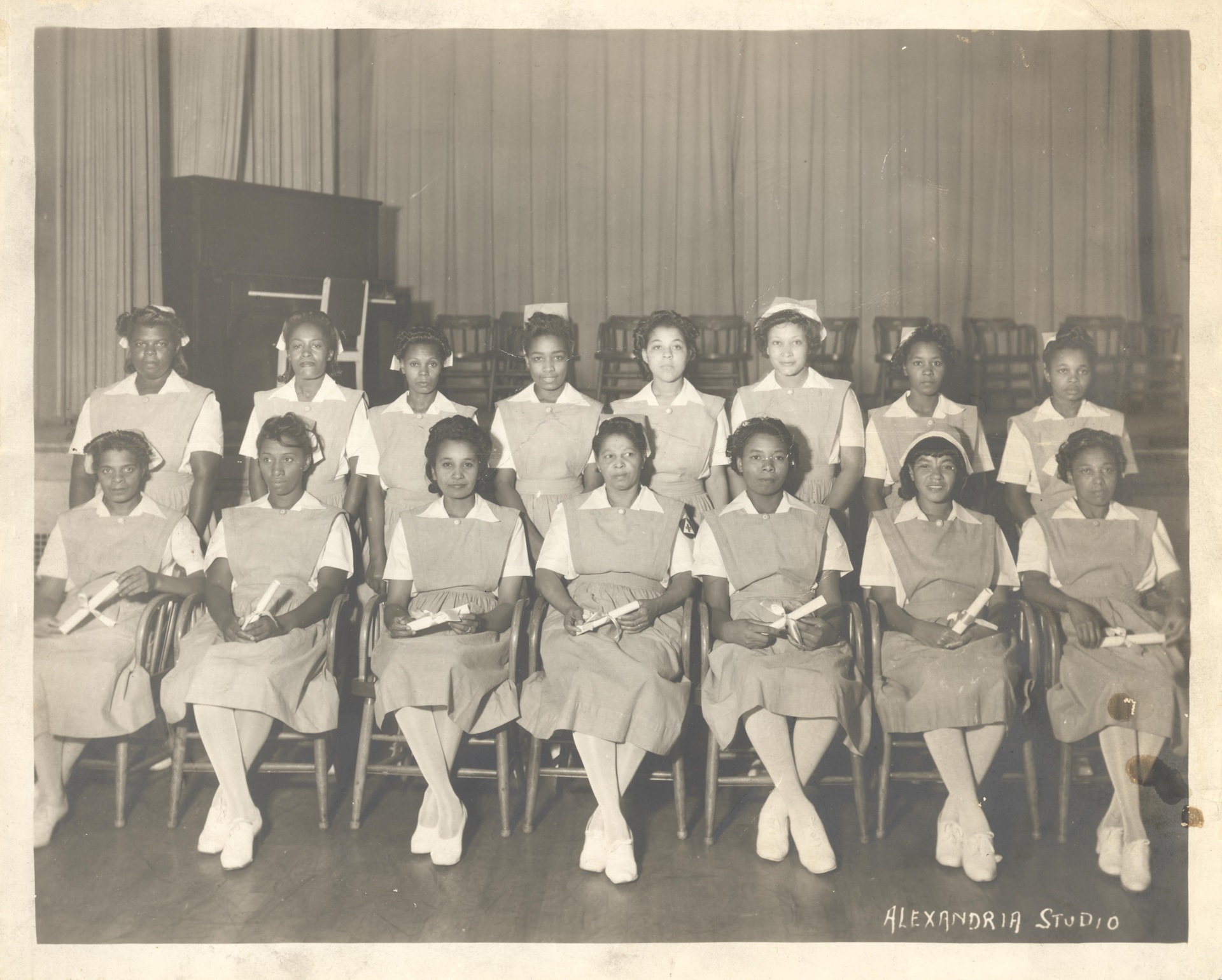
Willia Mackey (1934 - 2017)

Willia Mackey was a Nursing Supervisor at Alexandria Hospital. In 1974, she assisted in coordinating the hospital’s closing of the Duke Street location and final move to the Seminary Road location. Mackey served at the hospital for many years. She coordinated volunteer services, worked with the nursing students, and became the first African American Director of Patient Representative Services for the hospital. In this position, Mackey offered counseling services and acted as an advocate for patients. As a Patient Representative, she organized numerous programs such as the Martin Luther King, Jr. celebration. She retired from the Hospital in 1995.
In addition to being a Registered Nurse with a degree in nursing administration, Mackey pursued her interest in Bible studies at various institutions. She received an Honorary Doctorate in Humanities from Eastern North Carolina Theological Institute. Rev. Dr. Mackey was also a Licensed Minister at Alexandria’s Ebenezer Baptist Church.
Henry M. Ladrey, MD (c. 1897-1982)
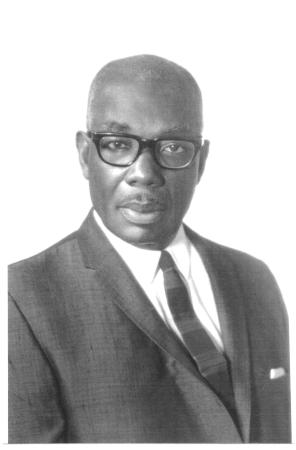
In 1943, Dr. Henry Milton Ladrey was one of five African American doctors who were granted courtesy privileges at Alexandria Hospital, one of the first hospitals in Virginia to do so. Courtesy privileges meant physicians could not only refer their patients to Alexandria Hospital – but they could also treat their patients while they were in the hospital.
Dr. Ladrey was born in Lucia, Jamaica, sometime in 1897. He received his professional education in the United States, graduating from Howard University School of Medicine in 1932.
Ladrey was an active member of the Alexandria community: he provided free medical care for the athletes of Parker-Gray High School, was a director of the Shriners Medical Foundation, past master of Lincoln Masonic Lodge Number 11, and a member of the Elks Lodge Number 48. In 1974, Dr. Ladrey was presented a key to the City of Alexandria.
Samuel B. Moore, MD (1872-1944)
Dr. Samuel B. Moore joined the staff of Alexandria Hospital in 1904 while simultaneously serving as a surgeon in the U.S. Army Reserve Corps. He was active in multiple professional organizations including the Clinical Congress of Surgeons of America, Virginia State Medical Society, the Alexandria City Medical Society, and the American Medical Association. He published many well-respected medical journal articles dealing with contemporary topics. As Chief Surgeon of Alexandria Hospital, Moore’s articles and opinions were well-informed and carried a great deal of influence.
Moore graduated with high honors from St. John’s Academy, a military school established by the Jesuits in Alexandria. In 1897, he graduated from the Georgetown University School of Medicine. His ancestors immigrated to Virginia from Waterford, Ireland, and members of the family served in the major American wars including the Revolution, War of 1812, Mexican War, and the Civil War.
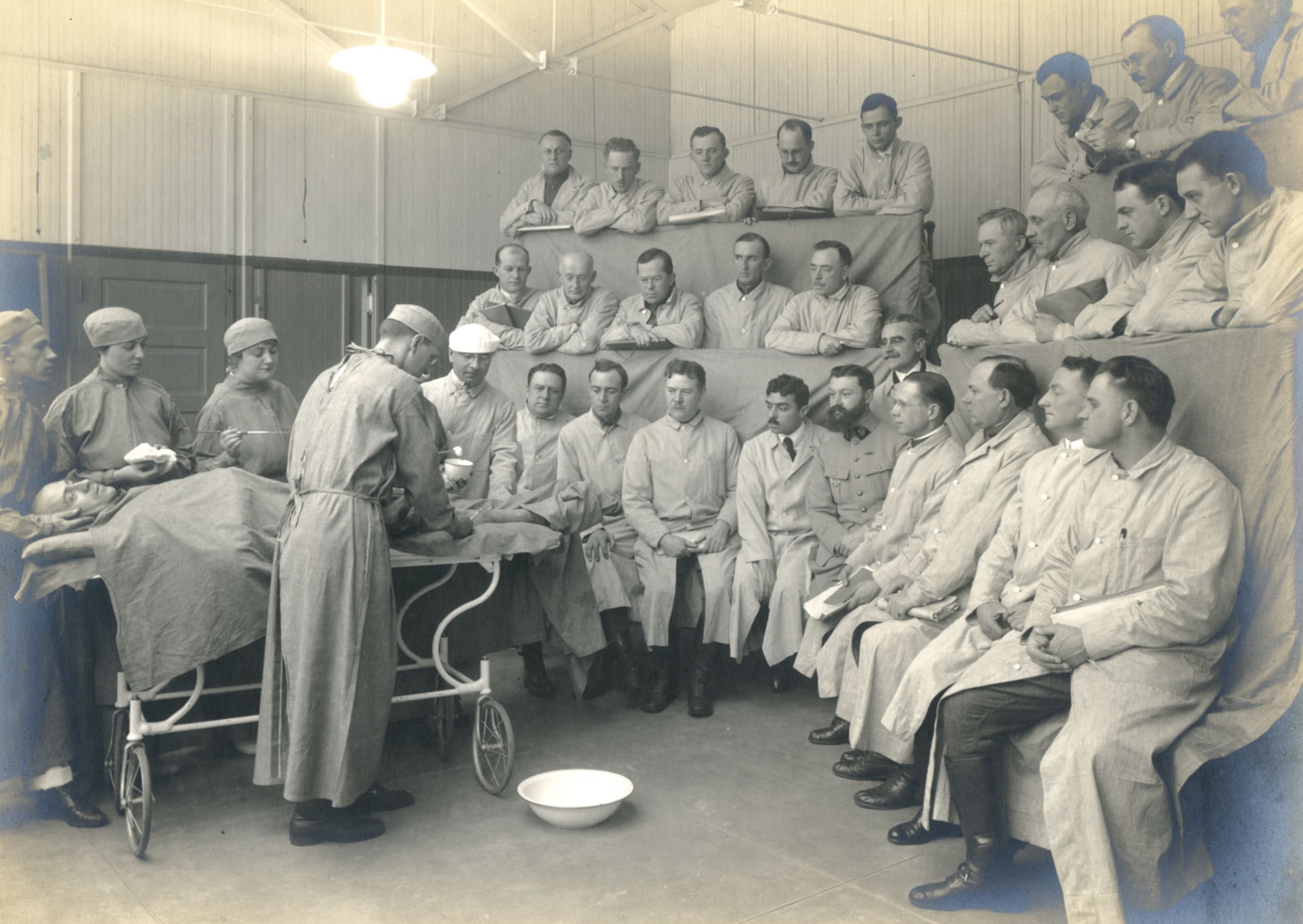
Moore Collection, Alexandria Library, Local History/Special Collections
In-House Volunteers
From the Board of Lady Managers and Trustees to Red Cross Nurse’s Aides and Candy Stripers, Alexandria Hospital has always relied on staff who donated their skills and time.
Volunteers found work at the hospital fulfilling, and the patients and paid staff benefited from their assistance. In the summer of 1982, the in-house volunteers at Alexandria Hospital were celebrated by the hospital’s newsletter, The Heartbeat, for their contributions over the year. From June 1981 through May 1982, the hospital received 31,887 volunteer hours split between the junior (age 14 – 18) and senior (age 18+) volunteers. Benefits of volunteering included opportunities to attend social events, and opportunities for learning such as classes on medical terminology and special emergency room training.
The volunteer staff consisted mostly of women, although men were encouraged to join as well. Hospital volunteers were often the first and last staff members patients saw during their hospital stay. The various responsibilities of the in-house volunteers included but were not limited to caring for children in the pediatric unit, assisting with admitting in the emergency room, answering questions at the information desk, photographing new-born babies, filing, data entry, socializing with patients in the geriatric rehabilitation program, and serving as runners delivering necessary supplies. In-house volunteers have also sponsored sales and raffles to raise money for the hospital.
Memories of Candy Striper Alexandra Edwards
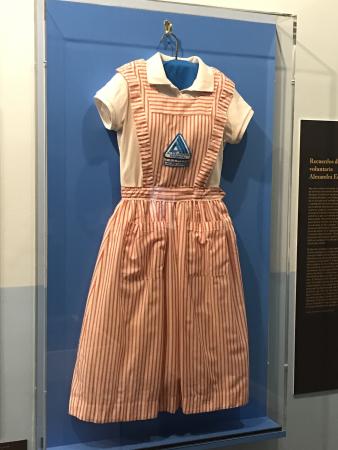
e-mail June 3, 2020
I volunteered to be a candy striper as part of a school community service project. The girls wore the striped pinafore uniform; boys and men wore a red jacket. There were other girls from my school who also volunteered, and we would try to get on the schedule together. Marion Kelso was the Head Volunteer and pretty strict with us - reminding us that we represented the hospital when we were volunteering and wearing our uniform, and she would not put up with any inappropriate behavior. I remember wearing tennis shoes since there was so much walking around the hospital - you never knew what errands you would help with. We delivered flowers to hospital patients, always knocking before entering the room and being quiet if they were resting. We also wheeled patients out of the hospital when they were discharged; the phone would ring in the Volunteer Office asking for help with a discharge. My favorite was taking the tiny babies and new mothers out to their car to go home - there were always so many flowers and bags to go home with them! We took a break for lunch and ate in the cafeteria; I don't remember if we worked for four hours or a full day. Mrs. Kelso always made it fun and kept us busy with other tasks when the flower deliveries were finished. There may have been a book and magazine cart to see if patients needed anything to read - I'm not 100 percent positive. If we were walking in the hospital, the uniform let everyone know we were a volunteer so we would answer questions from visitors looking for hospital rooms, the chapel, cafeteria, etc. I enjoyed volunteering and thought I would go into medicine at one point - I'm happy to continue to volunteer in a different capacity now. I think the most important thing I learned was that a hospital wasn't a scary place - everyone worked as a team and it was a happy atmosphere.
Leadership in Healthcare
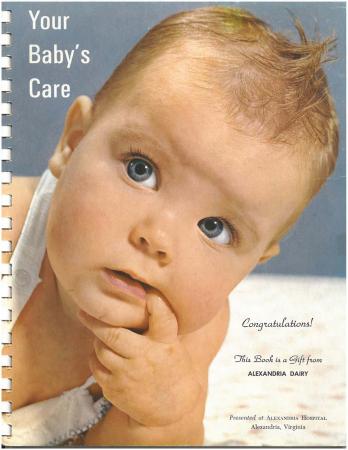
Photograph courtesy of Inova Alexandria Hospital
Alexandria Hospital has been on the forefront of adopting the latest technology in caring for mothers and infants. In 1953, doctors in Alexandria Hospital were the first on the east coast to offer epidural anesthesia for mothers in labor. When the Seminary Road hospital opened in 1962, Alexandria’s hospital had one of the first Neonatal Intensive Care Units in the United States. In this new department, premature and sick infants could be treated by doctors specialized in caring for them, including surgery. Babies could receive the most immediate and expert care as soon as their lives began, and such rapid treatment has contributed to thousands of children now living full and healthy lives. Beginning in 1978, the hospital not only devoted wings for deliveries but also designed specially tailored rooms to be comfortable and inviting for mothers and their families. The intent was to create a more home-like atmosphere for expectant mothers.
At one time a medical emergency or serious injury outside of a hospital’s regular hours could be a real danger. Hospital emergency rooms only provided limited care after “business hours.” If there was a serious emergency in the middle of the night, doctors would need to be summoned from their homes and the time necessary to travel to the hospital could put a patient’s life at risk. In 1961, to better care for these emergency cases, four doctors working at Alexandria Hospital would stop general duties in their departments to treat emergency room patients full-time. They spaced out their work schedules into overlapping parts of the day so there was always at least one doctor present in the emergency room. The four physicians called this practice “The Alexandria Plan.” This new framework for emergency rooms provided the opportunity for physicians to focus on emergency care and a new medical specialty was born. The Alexandria Plan and emergency medicine specialty would spread through the United States and become the norm for emergency rooms around the world.
Alexandria Hospital: Women Mobilize the Community
This exhibition marked the 150th anniversary of the founding of the Alexandria Infirmary -- today's Inova Alexandria Hospital. Women established and sustained the hospital by fostering community support, making it one of Alexandria’s most community-based enterprises.
The exhibition was held at Alexandria History Museum at The Lyceum in 2023-2024.